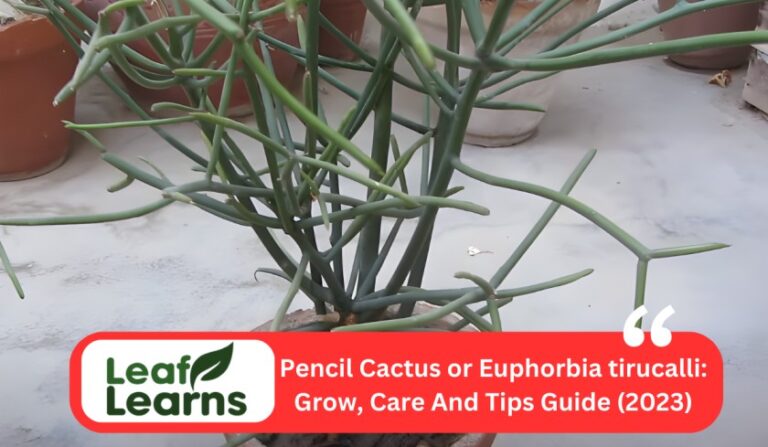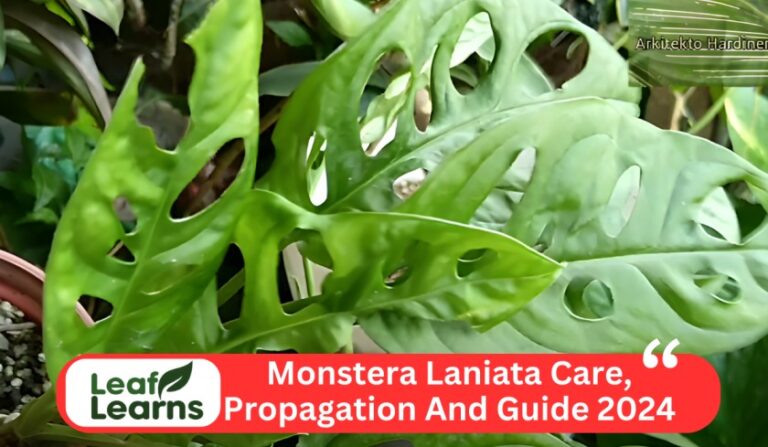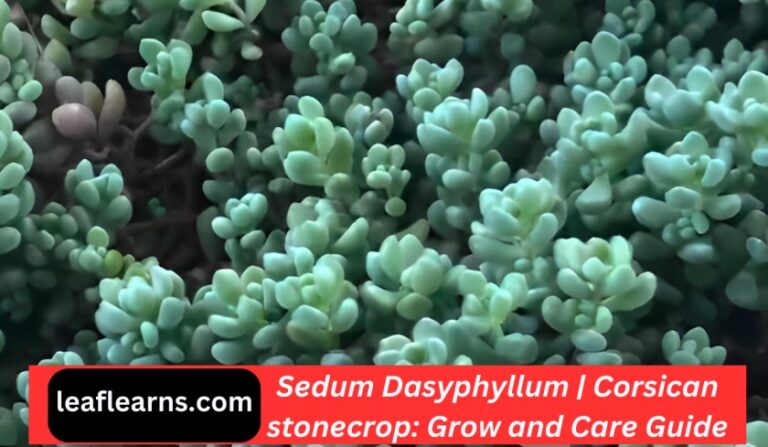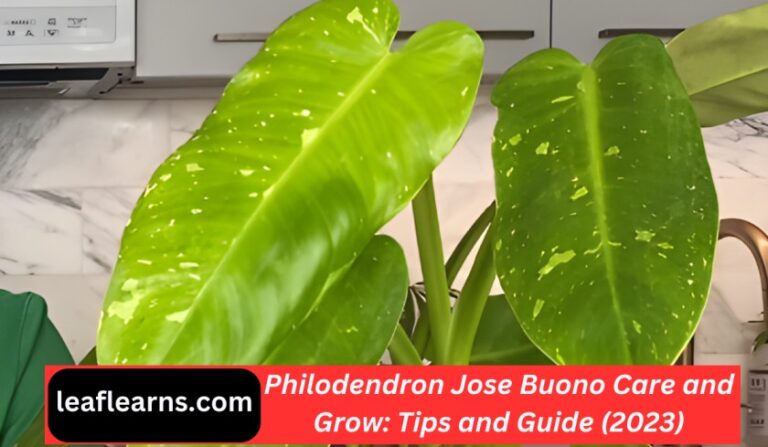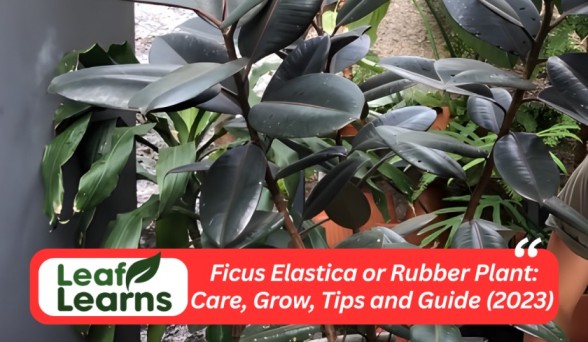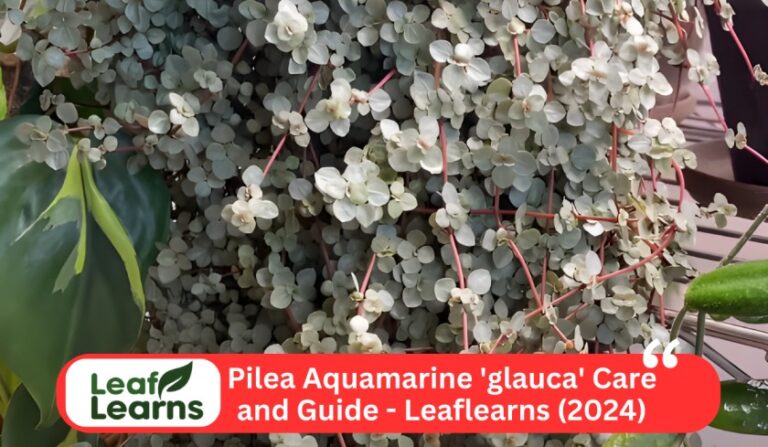How to Care and Grow Monstera dubia: Problems Guide (2023)
A captivating shingling plant, Monstera Dubia will make a huge impact in your indoor jungle. The beautifully patterned leaves and striking fenestrations make it a true green gem.

There’s no need to worry! If you haven’t always had a green thumb, we’ll guide you through Monstera-Dubia care, demystifying the process and making sure your plant thrives.
You’ll discover how to maintain a healthy and happy Monstera Dubia. Our complete guide covers everything you need to know to get the most out of your plant, from the best light to the best watering regime.
| Common Name | Shingle plant |
| Scientific Name | Monstera-dubia |
| Family | Araceae |
| Origin | South and Central America |
| Plant Type | Tropical Vine |
| Size | Small to Medium, about 1-3 feet |
| Leaf Colour | Dark green with silver markings |
| Leaf Size | 2 to 6 inches in length |
| Flower | Infrequent, inconspicuous flowers |
| Light | Bright, indirect sunlight |
| Water | Moderate; keep soil consistently moist |
| Soil | Well-draining potting mix |
| Temperature | 65-80°F (18-27°C) |
| Humidity | High |
| Fertilizer | Balanced liquid fertilizer monthly |
| Propagation | Stem cuttings or air layering |
| Pruning | Prune to control size and shape |
| Pests | Susceptible to spider mites and aphids |
| Toxicity | Mildly toxic, can cause irritation |
| Uses | Ornamental indoor plant, hanging basket, terrarium |
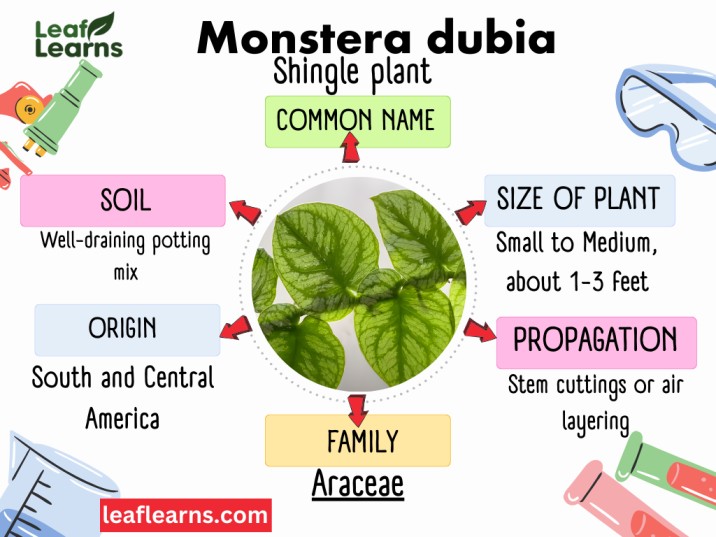
Contents
- 1 Getting to Know Monstera Dubia
- 2 Practical Tips for Dubia Monstera Care
- 3 Monstera-Dubia Care Essentials
- 4 Potting
- 5 Propagating Monstera Dubia
- 6 Pruning
- 7 How to repotting
- 8 Troubleshooting Common Issues
- 9 Toxicity and Varieties
- 10 Uses
- 11 Monstera-Dubia Growth and Care Guide
- 12 Purchase and Availability
- 13 Conclusion
- 14 FAQs
Getting to Know Monstera Dubia
What is Monstera-Dubia?
An intriguing shingling plant from Central and South America, Monstera-Dubia is a captivating shingling plant. It is easy to spot because of its striking fenestration patterns.
Its alluring and distinctive appearance has made Monstera-Dubia a favorite among plant enthusiasts.
What Makes Monstera-Dubia Unique?
Its notable shingling growth habit makes Dubia plant stand out. When its leaves climb, they form a living green tapestry if they are adhered closely to the surface.
Those who are patient and admire slow growth will find this plant rewarding.
Monstera-Dubia Growth Rate and Mature Form
In contrast to most plants, Monstera reaches maturity gracefully.
As it climbs, its unfenestrated leaves grow into fenestrated leaves that are larger than the ones it has at first.
Plant parents are rewarded with plants with intricate, natural patterns that are a testament to their dedication.
Practical Tips for Dubia Monstera Care
- To find out if your area has any plants, visit a local nursery or an online plant shop.
- Make recommendations through plant communities and forums.
- It is important to purchase plants from reputable sellers in order to ensure quality.
- Plant your Monstera-dubia on stakes or trellises so it will climb.
- As the climbing support grows, it should be inspected and adjusted regularly.
- To maintain optimal root health, choose pots with drainage holes.
- A sturdy stake, moss pole, or wall mount will help grow plants.
- As the plant matures, be sure to choose a pot that will provide space for root expansion.
- Wooden planks or moss poles are ideal mounting surfaces for plant.
- A good soil contact is essential for root attachment.
- Healthy growth and adhesion require a balanced level of moisture.
Monstera-Dubia Care Essentials
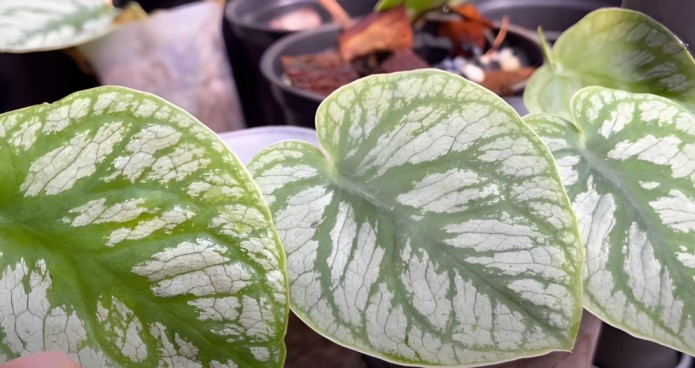
Light Requirement
For Monstera-Dubia’s care, understanding its light needs is essential. A bright, indirect sunray is ideal during summer, because it avoids harsh rays.
Light should be provided cautiously in winter. It is best to balance your life in the spring and fall.
Even though it does not grow tall, its distinctive shingling leaves make it an eye-catching addition.
Watering
It’s like taking care of a lush, green jewel that makes any space more attractive. It is important to water plants according to the season.
When the sun is at its peak in summer, it is necessary to water more frequently. Watering should be reduced in the winter in order to prevent root rot.
There is a need for consistent moisture in spring and fall. Moreover, the height of the plant has a bearing on its moisture requirements.
For your Monstera-Dubia to grow and flourish in any season, you have to achieve this balance.
Ideal Soil
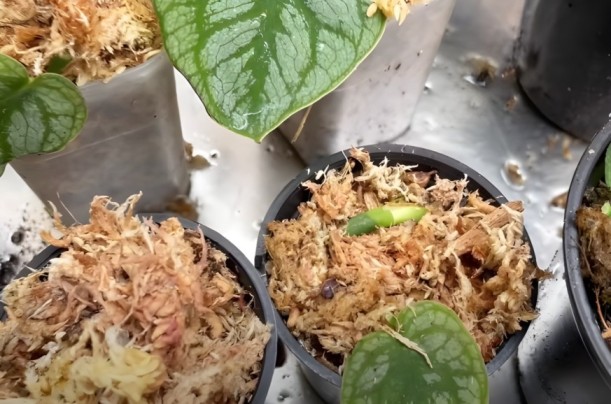
It is crucial to select the right soil for Monstera-Dubia care. To prevent waterlogging and root rot during summer, choose well-draining soil.
To maintain cold-weather resistance, choose a soil mix that retains some moisture in winter.
It is important to have an airy, balanced soil blend during spring and fall to support smooth seasonal transitions.
The ideal shingling can be created using potting soil, perlite, and orchid bark.
Maintaining the Right Temperature and Humidity
Temperature and humidity are important factors in Dubia plant care. For thriving, keep the temperature between 70 and 85°F (21 and 29°C).
The ideal temperature for fall is 60-75°F (15-24°C) with protection from drafts, while the ideal temperature for winter is 60-75°F (15-24°C).
For lush growth all year round, mist, use humidity trays, or use humidifiers to maintain a constant 60-80% humidity level.
Fertilizing
Fertilization is the key to proper Monstera-Dubia care. Water-soluble fertilizers with high nitrogen should be used during the active summer growth phase.
Feeding should be reduced as fall approaches to prepare for winter. Winter is a time for slowing down or suspending fertilization.
Once spring arrives, restart regular feedings of balanced and high-phosphorus fertilizers to promote root growth and leaf expansion.
Ensure that soil salts are not built up by over fertilizing. No matter what the season or size of your business, this tailored schedule ensures year-round thriving.
Potting
You need to choose the right pot and soil for Monstera care. Root rot can be prevented by using well-draining soil in summer.
Water plants infrequently in winter to avoid overwatering. Care needs to be adjusted in spring and fall.
Maintain its upright growth and show off its shingling leaves with a sturdy trellis or moss pole.
You must choose the right pot size, mix the soil properly, and follow proper potting techniques to ensure its thriving growth in your indoor space.
Propagating Monstera Dubia
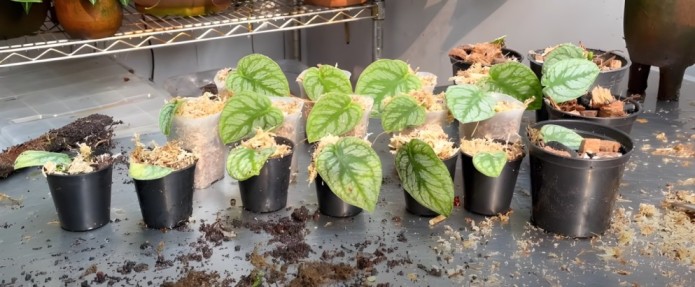
In this article, we’ll uncover the secrets of propagation, covering various methods and tips to help you succeed in growing your Dubia family.
From Cuttings: The Classic Approach
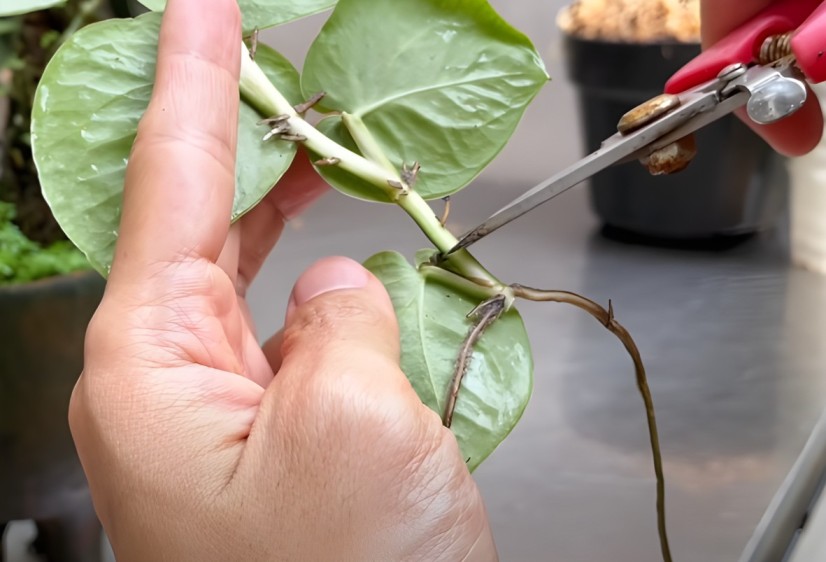
One of the most common and successful methods of propagating Dubia plant is by using cuttings. Follow these simple steps to propagate your prized plant:
Choose the Right Cutting: Make sure the stem has at least one leaf and a few inches of stem beneath it. The node is the small bump on the stem just below which you should make your cut.
Let the Cutting Heal: Air dry the cut end for a day or two. If the cutting is buried in soil, this step helps prevent rot.
Plant in Soil: Make sure the node of the cutting is below the surface of the soil and plant it in a well-draining potting mix.
Provide Optimal Conditions: Provide indirect light and warmth to the potted cutting. Make sure the soil is consistently moist, but not soggy.
From Seeds: The Patient Approach
While propagating Monstera-Dubia from seeds is less common, it’s still a viable option. Here’s how to do it:
Harvest the Seeds: The plant doesn’t produce seeds frequently, so it can take time to harvest seeds from a mature Monstera plant.
Prepare the growing medium: Make sure the growing medium you use is well-draining.
Plant the seeds: Gently press the seeds into the growing medium once they have been planted. Do not bury them.
Provide Adequate Conditions: Use a plastic lid or plastic wrap to maintain a high humidity level in pots or trays. Incorporate bright, indirect light into the room where they are placed.
Be patient: The germination process may take several weeks or even months, so patience is important. Transplant seedlings into individual containers as they grow.
Achieving Blooms: The Grand Finale
Aside from its distinctive foliage, Dubia plant can eventually produce striking blooms if properly cared for.
Fruits can be used for propagation, making it a great plant for serious plant enthusiasts.
Pruning
In order for Dubia plants to flourish, they must be pruned regularly. Focus on removing any yellow or brown leaves to enhance the plant’s appearance.
Regularly trim overgrown or damaged leaves to stimulate new growth. Keeping Monstera-Dubia in good shape and size requires pruning.
Make precise cuts with clean, sharp shears. Proper Monstera-Dubia pruning ensures a healthy and attractive plant.
How to repotting
- Choose a pot with a slightly larger diameter: A larger pot will create more space for your plants.
- Fresh soil is needed for healthy root growth. Use a peat-based soil mix that drains well.
- Remove the plant gently from its old pot without damaging its roots.
- Add fresh soil around the plant and place it in the new pot.
- Keep your plant in an indirect light spot and water lightly.
- Keeping an eye on the growth of your plant is important. Adjust care as needed.
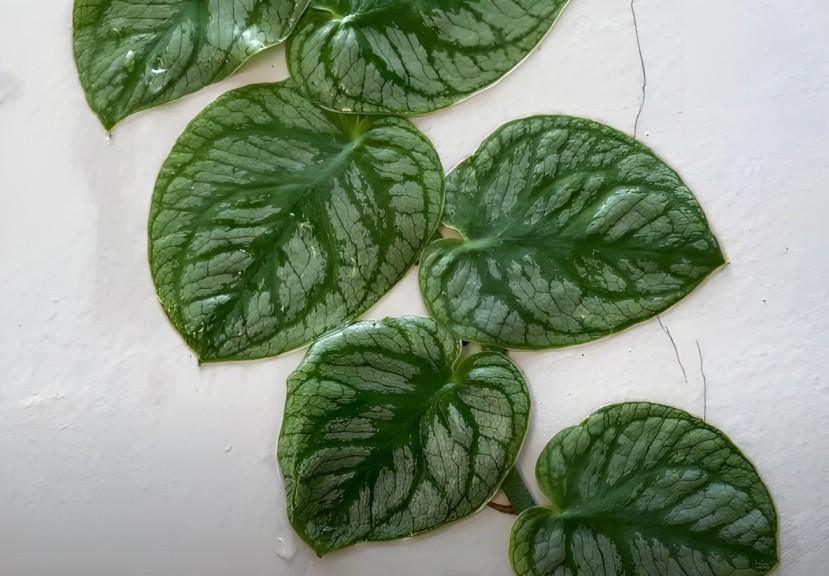
Troubleshooting Common Issues
In this guide, we’ll explore a few common issues that can arise and provide expert advice on how to solve them.
If you’re a proud owner of a plant you’re probably experienced a few hiccups along the way.
Addressing Wilting and Yellowing Leaves
You should be concerned when your Monstera leaves begin to wilt or turn yellow since leaves are like its calling card. Fear not, there is a solution!
- First, check your watering habits. Overwatering can lead to wilting and yellowing.
- Ensure proper drainage and let the top inch of soil dry before watering again.
- Make sure your Dubia plant gets indirect sunlight, as too little light can cause yellowing. Adjust its position accordingly.
- If leaves are still discolored, consider nutrient deficiency. Follow recommended fertilization to give your plant the necessary nutrients.
Handling Pest Problems
A Monstera-Dubia’s well-being can be adversely affected by pesky pests. The following are some notorious culprits:
- The soil can be infested with fungus gnats. The topsoil should be allowed to dry out to discourage their presence. Use yellow sticky traps to catch them.
- An arachnid that spins fine webs on your plants and sucks the juices out of them, spider mites. Use neem oil or insecticidal soap to treat them.
- Thrips are tiny insects that can damage Monstera-Dubia by leaving silver streaks on the leaves. Insecticidal soap or neem oil can help you get rid of them.
- Small, hard bumps appear on the stems of your plants when they are infested with scale insects. Neem oil can be applied to prevent further infestations after removing them with a soft brush.
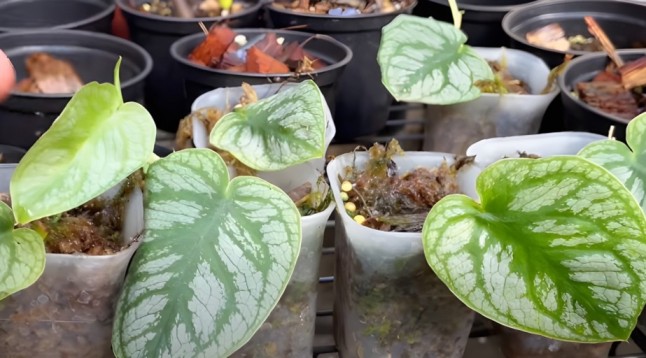
Overwatering and Underwatering
It is crucial for Monstera’s health to balance the right amount of water.
- In cases of overwatering, roots may rot, causing soggy soil and yellowing leaves. Before watering, let the topsoil dry out and consider repotting if root rot has developed.
- A plant that is underwatered will show signs of wilting, drooping leaves, and dry soil.
Overwintering Your Monstera Dubia
The growth of your plant might change as winter approaches. During this time, you should adjust your care.
- Maintaining your plants’ growth requires adequate artificial light during short daylight hours.
- The Monstera-Dubia prefer stable temperatures, so do not expose them to drafts or extreme cold.
- You can reduce the frequency of watering your plant during the winter, as it typically requires less moisture when the light is lower.
Toxicity and Varieties
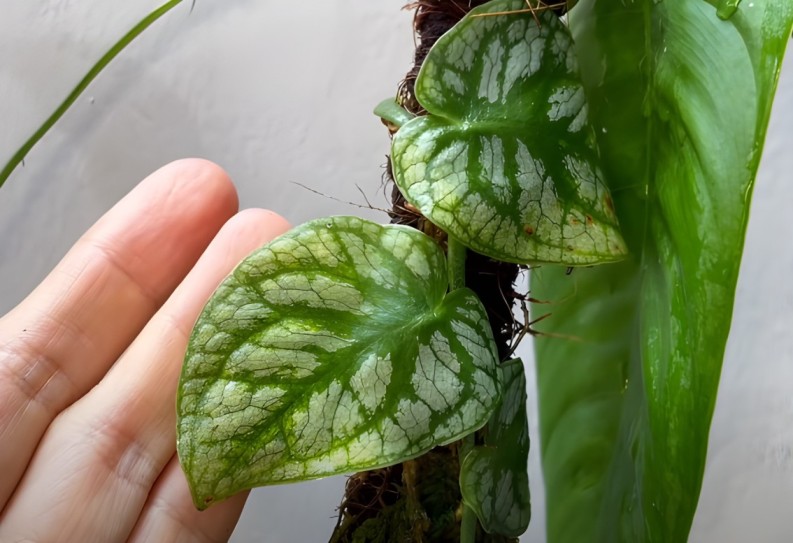
Toxicity to Humans
When bringing in a new plant to your home, the first question that often arises is, “Is it safe for me and my family?” With Monstera-Dubia, you can relax.
This plant is generally nontoxic to humans, so it can be displayed safely in your indoor jungle. Feel free to display it freely.
Toxicity to Cats and Dogs
Keeping their pet healthy is a top priority for many pet owners. However, Monstera-Dubia can cause mild gastrointestinal distress if ingested by cats or dogs even though it is not highly toxic.
Exploring Different Monstera-Dubia Varieties
Monstera-Dubia ‘Albo-variegata’ – Adding a touch of elegance to your indoor jungle with white variegation. Green leaves contrast beautifully with white leaves.
Monstera-Dubia ‘Thai Constellation‘ – This ‘Thai Constellation’ is a visual masterpiece due to its striking creamy-white speckles and marbling on the leaves. It’s like having a work of art in your living room.
Monstera-Dubia ‘Big Form’ – With its large leaves, Monstera-Dubia ‘Big Form’ makes a magnificent addition to your garden. It commands attention with its lush foliage.
Monstera-Dubia ‘Green Form’ – Simple, rich green leaves charm with its simplicity. If you’re looking for something classic and timeless, then this is the perfect choice.
Monstera-Dubia ‘Variegated Form’ – This variety will steal your heart if you want something different. With its mixture of green and white leaves, it is a real show-stopper.
Monstera-Dubia ‘Mini’ – This miniature variety delivers all the charm of its larger relatives, but is perfect for small spaces or tiny gardens.
Monstera-Dubia ‘Satin Pothos’ – Recognizable by its silver-flecked foliage, this variety is an enchanting indoor oasis staple that adds an air of mystery.
Uses
- You can add a touch of tropical elegance to your decor with Dubia’s shingling leaves and unique fenestration.
- A natural air purifier, this plant reduces common pollutants to enhance indoor air quality.
- Your mental well-being is positively impacted by caring.
- As a result of this plant, humid conditions are maintained, which is very beneficial in situations where winter is a concern.
- Monstera-Dubia can be trained to climb as a natural room divider and as a privacy screen.
- This unique plant has a captivating appearance and growth pattern that makes it an excellent conversation starter.
- For lush terrarium environments, Monstera plant compact size and shingle habit make it the ideal plant.
- Plant enthusiasts of all levels will find Monstera-Dubia easy to maintain, with minimal care requirements.
- This plant stands out because of its distinctive leaf structure, which adds variety to your collection.
- Growing Monstera from cuttings can be an enjoyable and rewarding experience as you propagate and share its beauty.
Monstera-Dubia Growth and Care Guide
When it comes to the growth of Monstera-Dubia, understanding its life stages is crucial for proper care. As this plant matures, it transitions from a juvenile stage to an adult, with the term “monstera-dubia adulte” indicating its fully grown state.
The growth rate of this plant can vary, but it is known for reaching its full size, or “ausgewachsen,” over time. The mature form of plant often takes on a distinctive appearance, with shingling leaves and intricate fenestration that make it a captivating addition to any indoor space.
For those who prefer a larger and more imposing presence, there’s also the option of the Monstera-Dubia large form, which showcases the plant’s unique characteristics on a grander scale.
Purchase and Availability
For enthusiasts looking to add this botanical gem to their collection, understanding where to find Monstera-Dubia is essential. While it’s native to Australia, the plant has gained international popularity, making it available for purchase across the globe.
However, its increasing demand and unique features contribute to the higher price tag associated with this plant. This rarity, coupled with its aesthetic appeal and care requirements, makes it a sought-after choice among plant enthusiasts.
Whether you’re exploring options on platforms like Allegro or seeking a trusted source for an “achat” (purchase), acquiring a Monstera may require some effort, but its beauty and uniqueness make it a worthwhile addition to any plant lover’s collection.
Conclusion
Monstera-Dubia is an intriguing shingling plant with unique characteristics that make it a great addition to any indoor garden.
Regardless of your level of experience in plant care, our comprehensive guide ensures your plant thrives. Get to know Dubia varieties, water, soil, temperature, and fertilization.
Choose the right variety for your space, and with proper care, it will thrive, enhancing your indoor environment. Happy planting!
FAQs
Is Monstera dubia rare?
The Monstera-dubia is considered an extremely rare plant, which makes it a desirable addition to any collection of plant enthusiasts.
How much light does Monstera dubia need?
Despite its preference for indirect light, this plant can be grown in most indoor spaces, provided it is protected from direct sunlight.
Can a Monstera dubia hang?
In an attractive display, this plant can be trained to climb a support like a trellis or moss pole.
Is Monstera dubia a fast grower?
In the garden, it is a patient gardener’s delight because of its moderate growth rate.
Why are Monstera Dubia so expensive?
Because Monstera-dubia is rare and in high demand, its price is higher.
Can Monstera dubia grow in water?
While Monstera can root in water, it is recommended that the plant be transitioned to soil in order to grow and be healthy in the long run.
Is Monstera dubia easy to care for?
If you provide it with the right amount of light, humidity, and water, Monstera dubia is relatively easy to maintain.
How do I identify Monstera dubia?
The shingled leaves of Monstera-dubia and distinctive fenestration patterns set it apart from other plants.
What is the best way to grow Monstera dubia?
Lighting, regular watering, and allowing it to climb are the best ways to grow Monstera-dubia.
What is the best potting mix for Monstera Dubia?
Monstera-dubia can grow in a potting mix containing peat, perlite, and pine bark that provides good aeration and drainage.
What is the habitat of Monstera Dubia?
Monstera-dubia is native to the tropical rainforests of Central and South America, where it thrives in the understory.

